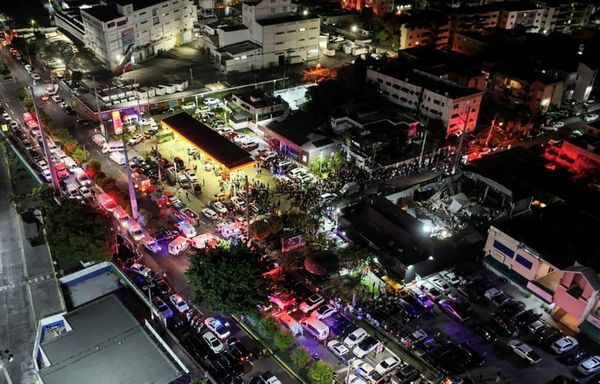
Election day has arrived in America, with tens of millions of voters set to head to the polls on Tuesday in one of the closest and most consequential contests in modern US history.
The Democrat Kamala Harris and her Republican opponent, Donald Trump, appear locked in a knife-edge contest with hardly any daylight between the pair in national opinion polls that have barely budged in weeks.
In the seven crucial swing states – Michigan, Wisconsin, Pennsylvania, Arizona, Nevada, Georgia and North Carolina – the picture was the same. Recent polling has been unable to discern a clear pattern or advantage for either Harris or Trump in this electoral battleground, though most experts agree that whoever wins the Rust belt state of Pennsylvania is likely to have a clear advantage.
“If we win Pennsylvania, we win the whole ball of wax,” Trump, 78, said at a rally in Reading, in the state’s south-east corner, during a frenetic final day of campaigning in the state. Later, in Pittsburgh, he framed the election as a choice between “a golden age of America” if he returns to the White House or “four more years of misery, failure and disaster” under Harris.
Harris, 60, spent all of Monday in Pennsylvania and finished in Philadelphia, where she was joined by the singer Lady Gaga and TV personality Oprah Winfrey, who warned of the threat that Trump poses to democracy. “We don’t get to sit this one out,” Winfrey said. “If we don’t show up tomorrow, it is entirely possible that we will not have the opportunity to ever cast a ballot again.”
It is the swing states that will decide the election, because under the complex American political system, the result is decided not by the national popular vote but an electoral college in which each state’s number of electors is weighed roughly by the size of its population. Each candidate needs 270 votes in the electoral college to clinch victory, and the battleground is formed of those states where polls indicate a state could go either way.
More than 78m early ballots have been cast but the result may not be quickly known. With polling so tight, full results in the crucial swing states are unlikely to be available on Tuesday night and may not even emerge on Wednesday, leaving the US and the wider world on tenterhooks as to who may emerge as America’s next president.
The election brings to an end a remarkable and in many ways unprecedented election campaign that has deeply divided American society and upped the stress levels of many of its citizens amid warnings of civil unrest, especially in a scenario where Harris wins and Trump contests the result.
Harris has consistently centered her campaign on the autocratic threat that Trump represents. In her final big signature event, Harris staged a rally of 75,000 supporters on the Ellipse in Washington – the spot where Trump helped encourage his supporters to attack the Capitol on 6 January 2021.
“On day one, if elected, Donald Trump would walk into that office with an enemies list. When elected, I will walk in with a to-do list full of priorities on what I will get done for the American people,” Harris told the crowd.
Harris’s campaign has tried to represent a page turning on the Trump era and threat of his return to the White House. She has acknowledged that calling Trump a fascist is a fair reflection of his political beliefs and the intentions of his movement, while insisting that she represents a choice that will serve all sides of America’s deeply fractured political landscape.
Trump, meanwhile, has run a campaign fuelled by a sense of deep grievance, both personal, at his legal travails, and the perception among many of his supporters of an ailing America that is under threat from the Democrats. That sense of victimhood has been fueled by lies and conspiracy theories that have baselessly painted Biden and Harris as far-left figures who have wrecked the American economy with high inflation and an obsession with identity politics.
Trump has also put immigration and border security at the heart of his campaign pitch, painting a picture of America as overrun with crime caused by illegal immigration that has often veered into outright racism and fearmongering. He has referred to undocumented immigrants as “animals” with “bad genes” who are “poisoning the blood of our country”.
The huge divisions between the two campaigns and the language used by candidates – especially Trump and his allies – have led to widespread fears of violence or unrest as voting day plays out and especially as the count goes on. In the run-up to election day, ballot drop boxes used for early voting were destroyed in several US states.
At the same time, however, it was Trump himself who was the subject of two assassination attempts during the campaign. At a rally in Pennsylvania, an assassin’s bullet grazed his ear and at a golf course in Florida, a gunman lay in wait for an ambush, only to be foiled by an eagle-eyed Secret Service agent before he could open fire. Neither shooter seemed coherently politically motivated or definitively aligned with one side or another.
Read more of the Guardian’s 2024 US election coverage:
US election 2024 live updates: latest polls, results and news
How the electoral college works
Lessons from the key swing states
What’s at stake in this election







